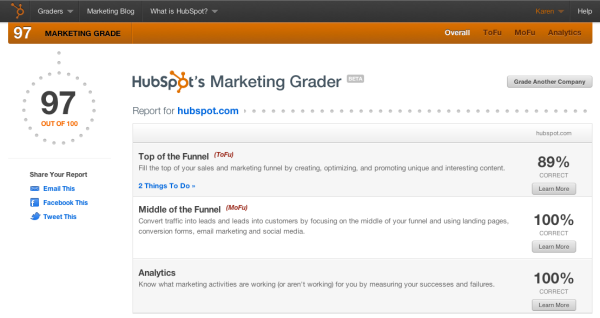In light of the evolving situation around the COVID-19 pandemic, the Australian Government has released a number of economic responses to support individuals, households and businesses and improve stability in this particularly volatile environment.

With so much information being circulated, updated and changed so frequently, we wanted to provide a summary of the government’s response in a more easily digestible format.
Below is a guide to the Australian government support that is currently available for:
- Individuals and households
- Businesses
- The flow of credit for businesses and lending institutions
You’ll also find a summary of timings at the end of this page, where the implementation dates of each initiative are listed in accordance with government guidelines at the time of writing.
This blog post is meant as a basic resource and not a comprehensive guide. For the most up-to-date information visit the official Australian government website, which outlines in detail the official economic response to the Coronavirus.
You'll also find more helpful content and resources on our dedicated Community Support Hub for Australian & New Zealand businesses.
Support for Individuals and Households
1. Income support for individuals.
The Government is providing an income support payment of $550 to individuals every two weeks. This is limited for six months as a temporary Coronavirus supplement and is applicable to new and existing recipients of existing support payments such as JobSeeker Payment, Parenting Payment etc.
You can apply for this by creating and/or signing into your myGov account online and registering your intention to claim a Centrelink payment.
2. Payments to support households.
This is the provision of two $750 payments for specific groups such as veterans, concession card holders and other income support recipients. The second of those two payments won’t be made available to those that qualify for the aforementioned Coronavirus supplement for individuals.
You can apply for this by creating and/or signing into your myGov account online and registering your intention to claim a Centrelink payment.
3. Temporary early release of superannuation.
This release entitles individuals and those operating as sole traders that have been impacted to an early, tax-free withdrawal of up to $10,000 of their superannuation in 2019-2020 financial year and another $10,000 in the 2020-2021 financial year.
You can apply for this by creating and/or signing into your myGov account online and registering your interest in accessing your super early.
4. Temporarily reducing superannuation minimum drawdown rates.
Superannuation minimum drawdown rates have been reduced by 50% from 2019-2020 and 2020-2021 income years to reduce the need to sell assets in order to fund these requirements.
You do not need to apply for this.
5. Reducing social security deeming rates.
Social security deeming rates were reduced by 0.5% on March 12th and have since been reduced by another 0.25%, meaning that income from savings will be lessened. This will benefit many income support recipients and also Age Pensioners who will get $324 more of their Age Pension over the first full year of these new rates.
You do not need to apply for this.
Support for Businesses
1. JobKeeper payment.
As of March 30th, 2020, the JobKeeper Payment provides businesses with $1,500 every two weeks per eligible employee to supplement their wages, for a maximum of six months. This isn’t available for businesses subject to the Major Bank Levy, but can include sole traders. You may qualify for this if:
- Your turnover is less than $1bn and has reduced or likely to reduce by 30% or more
- Your turnover is more than $1bn and has reduced or likely to reduce by 50% or more
- Charities or NFPs will be eligible for the subsidy if they estimate their turnover has or will likely fall by 15% or more
Businesses can register their interest here and below are some additional assets for this:
2. Boosting cash flow for employers.
Small-to-medium businesses and not for profit bodies that employ staff during the current climate will receive temporary, tax-free cashflow support from the government from 28th April, ranging from $20,000 to $100,000. This will be done through two credit boosts in the activity statement system as and when eligible businesses submit their activity statements.
Initial payments will be made from March to July, 2020, and will be 100% of employees’ salary and wages that have been withheld. Minimum initial payment will be $10,000 and maximum will be $50,000. A second payment will be made to those who received the initial boost and will be for the same amount as the first payment. You may qualify for this if:
- You’re a small or medium-sized business with an aggregated annual turnover under $50m with employees that are also eligible
- You’re a not for profit business with an aggregated annual turnover under $50m with employees that are also eligible
You don’t need to apply for the cash flow boost. All you need to do is lodge your upcoming activity statements. You must lodge your March and Q3 activity statements on their due date and no earlier to ensure you receive the maximum refund available. If your business is eligible, the credit will be automatically applied on or after 28th April 2020.
3. Temporary relief for financially distressed businesses.
The limit at which creditors and other bodies can issue statutory demands or start bankruptcy proceedings against a business is being temporarily increased from $2,000 to $20,000, as is the response time that a business has to reply to these proceedings and demands, extending from 21 days to six months.
This initiative also temporarily relieves directors from personal liability for trading during insolvency as a result of the Coronavirus. With this, the ATO will aid in creating solutions for businesses that are suffering and this includes reducing payments or stopping enforcement actions.
You do not need to apply for this.
4. Backing business investment.
From now until 30th June, 2021, businesses with a turnover of under $500m can deduct 50% of the cost of eligible business assets on installation. However, the remaining cost of the asset will be subject to existing depreciation rules.
You do not need to apply for this.
5. Supporting apprentices and trainees.
If a small business doesn’t have the means to retain an apprentice or trainee, they can apply for a wage subsidy equal to 50% of the apprentice’s wages until 30th September, 2020. This is subject to a maximum of $21,000 per eligible apprentice and $7,000 per quarter.
Visit this page to learn more or apply for support.
Support for Coronavirus-affected regions and communities:
There’s now a fund of $1bn available to support communities and areas that have most heavily been impacted by Coronavirus and include industries like tourism, agriculture and education. At the time of writing, the Deputy Prime Minister will work with affected industries and communities to develop recovery plans and measures.
You do not need to apply for this.
Supporting the Flow of Credit
1. Support for immediate cash flow needs for SMEs.
The government will now support short-term unsecured small-to-medium enterprise loans by providing 50% to lenders, guaranteeing up to $40bn in the process. Through this, businesses will get the funding they need to keep cash flowing by enabling lending institutions to extend their credit lines.
Advice from this official government website says if you're interested in the Coronavirus SME Guarantee Scheme you should approach your financial institution for more information.
2. Quick and efficient access to credit for small business.
Lending institutions now have leeway as the government provides temporary exemption for certain lending obligations in terms of providing credit to small businesses. This means lenders can extend their line of credit to small businesses much quicker and more efficiently than before.
Advice from this official government website says if you're interested in the Coronavirus SME Guarantee Scheme you should approach your financial institution for more information.
3. Reserve Bank of Australia — Supporting the flow and reducing the cost of credit.
Banks now have access to $90bn+ in funding at a fixed interest rate of 0.25%, reducing their funding costs and in turn reducing the interest rates imposed on businesses borrowing from these banks. This is being implemented with a view to encouraging business lending and reducing the cost of borrowing for banks and businesses.
Advice from this official government website says if you're interested in the Coronavirus SME Guarantee Scheme you should approach your financial institution for more information.
4. Australian Prudential Regulatory Authority — Ensuring banks are well placed to lend.
The Australian Prudential Regulatory Authority has made significant changes in terms of the expectations they have on bank capital ratios. Like the above, this measure is designed to ensure that lending can take place and that banks are in a solid position to do so.
Advice from this official government website says if you're interested in the Coronavirus SME Guarantee Scheme you should approach your financial institution for more information.
Timing of Assistance
- Increased instant asset write off — Immediately, with deductions to be included in 2019-20 tax returns
- Temporarily reduced minimum drawdown rates for superannuation — From 20 April 2020 Immediately
- Backing business investment — Accelerated depreciation — Immediately, with deductions to be included in 2019-20 tax returns
- Support for Coronavirus-affected regions and communities — As soon as practicable
- Register interest for JobKeeper Payment — From 30 March 2020
- First round of $750 payments to support households — From 12 March to 13 April inclusive
- Assistance for existing apprentices and trainees — Applications from early-April
- Temporary early release of superannuation — Applications from 20 April
- Income support and a Coronavirus supplement — From 27 April 2020
- First phase of Boosting Cash Flow for Employers — Quarterly lodgement from 28 April 2020, monthly lodgement from 21 April 2020
- Increased transfer payments from reduced deeming rates — From 1 May 2020
- Initial JobKeeper Payments received by employers — First week of May
- Second round of $750 payments to support households — Available on 10 July 2020
- Second phase of Boosting Cash Flow for Employers — From 21 July 2020
- Coronavirus SME Guarantee Scheme — From early April 2020
We hope that this has added some clarity to what is a very uncertain time for everyone, and that some of the initiatives being rolled out can help you and your business get through this hugely difficult environment.





![Are You Qualified Enough? Analyzing Today's Most In-Demand Marketing Skills [Free Handbook]](https://blog.hubspot.com/hubfs/BlogFeature1.jpg)



![Ready to Play Some Business Babble Bingo? [Free Customizable Bingo Cards]](https://blog.hubspot.com/hs-fs/hub/53/file-61804964-png/Blog-Related_Images/business-babble-bingo-image.png)